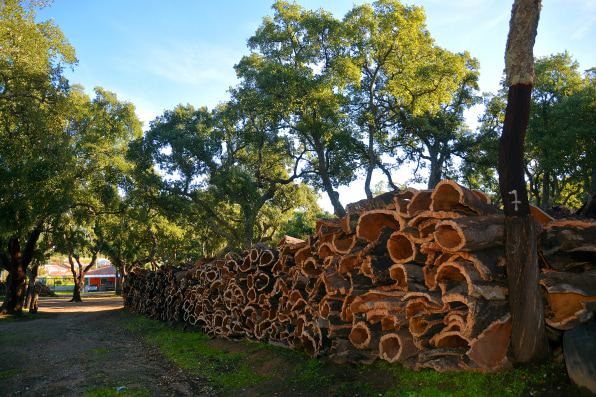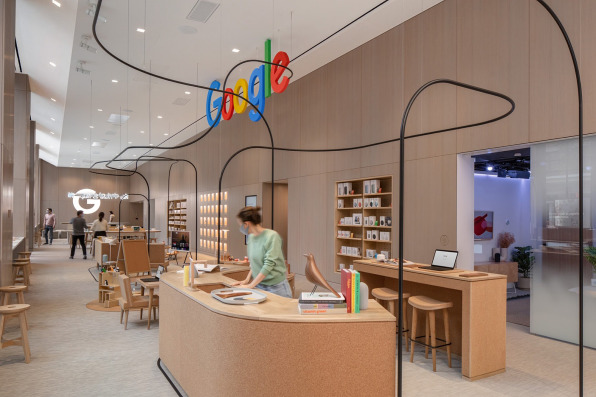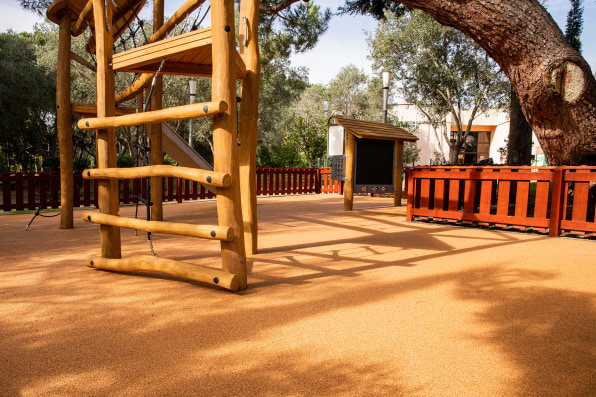- 6:00 AM
Why a Portuguese company is investing $10 million a year on a 3,000-year-old material
Cork has long been key to the wine industry, but Amorim is pushing this highly versatile material in surprising directions.

What’s the first thing you think of when you hear “cork”? Chances are, your mind wandered to that bottle of crisp Chardonnay sitting in your fridge, and for good reason. Capitalizing on cork’s porous nature and its resistance to liquids, winemakers have been using it as a stopper for centuries. But one particular company is pushing the material in surprising directions.
Amorim is the world’s largest producer of cork. Based in Portugal, which produces half the world’s cork, the company makes more than 5.5 billion cork stoppers per year—but it also invests 10 million euros a year in R&D to find new ways to use the material. Since 2018, the company has developed around 20 new materials that run the gamut from cork granules that can clean oil spills to rail pads that can absorb vibrations caused by trains and make tracks quieter.

Just about every tree has an outer layer of bark, but most cork products come from one particular species: the cork oak. The process is slow but regenerative: It takes around 25 years for a cork oak to grow its first layer of cork, after which it can be harvested every nine years or so. If you’re making wine stoppers, you need to harvest the cork three times for the quality to be high enough.
But if you’re making cork composite materials, the first and the second harvest are enough. Either way, the cork eventually grows back, and a cork oak tree can be stripped more than 15 times over the course of its 200-year life span.

A MILLENNIA-OLD MATERIAL
Cork has a long history. In 3000 B.C., it was used as fishing tackle across China, Babylon, and Persia. In the 4th century, Romans used it to warm their feet, while later, Spanish and Portuguese monks lined monastery walls with it. Then came glass bottles in the 17th century, and cork entered mainstream culture in the form of cork stoppers, almost eclipsing everything else the material was capable of.
Over the past 15 years, however, a growing need for a sustainable material has helped showcase cork’s versatility in a variety of ways. For one, 50% of cork is air. The material is light enough to float on water, which makes it perfect for the base of floating solar farms, but also for the transportation industry, where lighter materials can save on energy consumption.
The Siemens Inspiro metro trains (coming to London’s Picadilly Line in 2025) are lined with Amorim’s cork composite panels. The electric Mazda MX-30 sports a cork dashboard. And Rolls Royce’s all-electric Spirit of Innovation plane, which recently broke speed records when flown at a U.K. test site, used Amorim’s fireproof cork laminate to line its battery case and reduce fire risk.

“I’m not saying that cork isn’t flammable, but cork burns at a very slow and controlled pace,” says Eduardo Soares, the innovation and product management director at Amorim Cork Composites and founder of i.cork factory, the company’s in-house lab. He says the material’s fire-retardant properties have been particularly useful in the aerospace industry.
Since 1969, NASA has been using Amorim’s cork in its spacecraft and rockets. First, it was Apollo 11, then it was the Titan, Delta, and Mars rovers, plus the Space Shuttle Atlantis. Soares says that 80% of all NASA launches have been equipped with some form of cork composite, usually placed at the tip of the launcher where temperatures can reach 1,500-1,800 degrees Fahrenheit.
“Cork withstands that and it’s there precisely to protect the payload from the heat,” he says. (The European Space Station and SpaceX use it, too.)

BEYOND CORK STOPPERS
Amorim was founded in 1870, but by 1963 the company needed a solution to the cork waste it was producing. “When you produce natural cork stoppers, you take the bark from the tree, you punch, and you take the stopper,” Soares says.
That process uses only 30% of the cork, so Amorim Cork Composites was founded to explore applications for the remaining 70%. Today, the company uses 99.9% of the material (this includes burning leftover cork dust to meet more than half of its energy demands).
In 2018, however, another problem arose: The company had all of these ideas for new cork materials and no practical ways of turning them into products. So the i.cork factory was created to explore the technology, machinery, and equipment needed to design and test these new materials, like injection molding machines designed especially for cork composites.
These days the i.cork factory focuses on technologies that haven’t yet had industrial application in the sector. Soares says the company gets constant requests that range from trendy millennial (toothpaste with cork granules that can better clean your teeth) to laughable (adult toys made of cork). Sometimes material requests come from other units within the company; sometimes they come from “very famous” architects who want a cork facade that looks pink from a distance and multicolored up close. (The latter is in development.)

There’s Corksorb, a product made of cork granules designed to absorb oil from oil spills; Corkeen, which can be found in half a dozen playgrounds from Norway to California; AcoustiCork, a cork-based underlay that can sit beneath ceramic or wooden floors; and Amorim Sports, which includes a cork-based infill that can replace its rubber counterpart, reduce the temperature of the field, and remove that burnt-tire smell. (This has been used across football and rugby fields in France, as well as for the SG Malsburg-Marzell Sports Club football field in Germany.)
Ultimately, cork is a sustainable material, but it can have a meaningful impact only if there are enough ways to use it. Amorim is part of a vast ecosystem of brands, designers, and other companies pushing the boundaries on this ancient material. So next time you pop the cork from your favorite bottle, remember there’s so much more to it than wine.
|



No comments:
Post a Comment